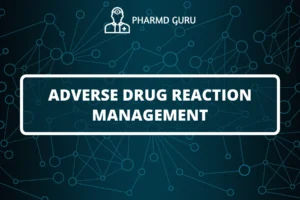Microbiological culture sensitivity tests, also known as antimicrobial susceptibility tests, are essential diagnostic tools used in microbiology laboratories to determine the most effective antibiotic treatment for infectious diseases. These tests provide valuable information about the susceptibility of microorganisms to specific antimicrobial agents, aiding healthcare professionals in selecting appropriate antibiotics and combating antimicrobial resistance. In this article, we will delve into the significance of microbiological culture sensitivity tests and how they contribute to optimal patient care.
SCROLL DOWN TO THE BOTTOM OF THE PAGE FOR ACTUAL NOTES
TABLE OF CONTENTS:
- Introduction
- Purpose of Microbiological Culture Sensitivity Tests
- Procedure and Interpretation
- Importance in Antimicrobial Stewardship
- Limitations and Future Developments
1. Introduction
Microorganisms, including bacteria and fungi, have the ability to cause infections in humans. Treating these infections effectively requires the selection of appropriate antimicrobial agents. Microbiological culture sensitivity tests provide valuable information about the susceptibility or resistance of microorganisms to specific antibiotics, guiding healthcare professionals in making informed decisions regarding treatment options.
2. Purpose of Microbiological Culture Sensitivity Tests
The primary purpose of microbiological culture sensitivity tests is to identify the most effective antimicrobial agents for treating infections caused by specific microorganisms. These tests help determine the susceptibility profile of microorganisms, indicating which antibiotics are likely to be effective and which may be ineffective. This information is crucial for tailoring antibiotic therapy to ensure optimal patient outcomes.
3. Procedure and Interpretation
Microbiological culture sensitivity tests involve isolating the microorganism responsible for the infection from a clinical sample, such as blood, urine, or wound discharge. The isolated microorganism is then cultured and exposed to various antibiotics to assess its response. The growth inhibition or minimal inhibitory concentration (MIC) of each antibiotic is determined, indicating its effectiveness against the microorganism. The results are interpreted based on established breakpoints and categorized as susceptible, intermediate, or resistant.
4. Importance in Antimicrobial Stewardship
Microbiological culture sensitivity tests play a crucial role in antimicrobial stewardship programs. These programs aim to promote the appropriate use of antibiotics, minimize the development of antimicrobial resistance, and optimize patient care. By providing specific information about the susceptibility of microorganisms, these tests aid in selecting the most effective and narrow-spectrum antibiotics, reducing the unnecessary use of broad-spectrum agents and preserving the effectiveness of antibiotics.
5. Limitations and Future Developments
While microbiological culture sensitivity tests are invaluable tools, they do have certain limitations. The tests are time-consuming, requiring several days for results, which may delay the initiation of targeted therapy. Additionally, these tests assess the susceptibility of isolated microorganisms in vitro and may not fully reflect the clinical response in the patient. Future developments in rapid diagnostic techniques and molecular-based methods hold promise in overcoming these limitations, allowing for more timely and accurate results.
ACTUAL NOTES




